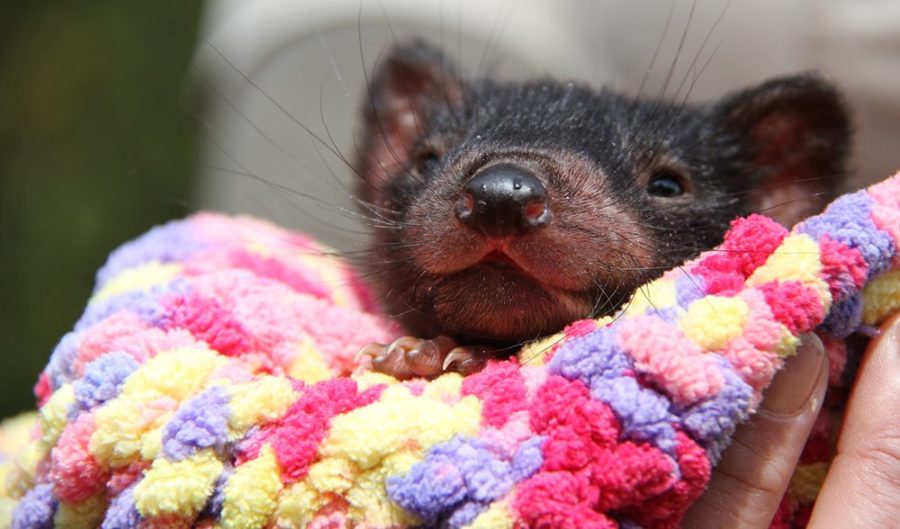VIDEO: Saving baby devils

AT THE ANNUAL open day for the Australian Ecosystem Foundation Incorporated, through a crowd of people listening to a wildlife presentation, I see a young woman with what looks like a brightly coloured beanie cradled in her arms. She holds the beanie tenderly, sometimes whispers a word to it.
As I walk toward her, something in the beanie moves. Between the pink, yellow and purple threads, a black nose pokes out – I look into the beanie and see two Tasmanian devil joeys.
They are five months old and in the capable hands of Siobhan Oxley from the Australian Reptile Park. Founded by Eric Worrell in the 1950, the Australian Reptile Park originally focused on reptiles but over the years more animals were included – especially Australian marsupials, which explains the presence of the two baby devils in front of me.
Siobhan has named them Hank and Tank and says for brothers they have incredibly different personalities. Tank is a heavy-set, lazy food-hog, and Hank is trouble on four paws – he loves to run around dragging any object bigger than himself. Siobhan cares for them 24/7, from multiple feedings every night, to taking them with her everywhere she goes, and she says it’s worth the long hours to try to save this endangered species.

Tiny ambassadors
Hank and Tank came from Devil Ark, which breeds Tasmanian devils in Barrington Tops National Park, 200km north of Sydney in NSW. Devil Ark, along with their partners such as the Australian Reptile Park, is trying to create a diverse gene pool of devils free from the deadly devil facial tumour disease (DFTD).
This contagious cancer, transmitted between devils from bites, has decimated the wild population. The tumours form on the face and within months usually become so large the animals are unable to eat or drink. They die from starvation, dehydration, or the cancer spreading to vital organs. The disease is so widespread that some people estimate Tasmanian devils will be extinct in the wild by 2020.
Devil Ark and the Australian Reptile Park are hoping that by breeding a large, disease-free population of devils, they can eventually release them back into Tasmania.
Hank and Tank are tiny ambassadors, and they have a big job ahead of them – raising public awareness of the plight of the Tasmanian devil can, through DFTD research, breeding programs, and reintroduction to safe-zoned areas, help save these devils from the brink.
RELATED CONTENT
- VIDEO: Devil Ark saving Tasmanian devils
- GALLERY: Tassie devils

